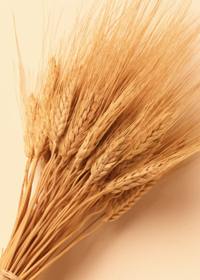 Mary Hartley, RD, MPH, is the director of nutrition for Calorie Count, providing domain expertise on issues related to nutrition, weight loss and health. She creates original content for weekly blogs and newsletters, for the Calorie Count library, and for her popular daily Question-and-Answer section, Ask Mary. Ms. Hartley also furnishes direction for the site features and for product development.
Mary Hartley, RD, MPH, is the director of nutrition for Calorie Count, providing domain expertise on issues related to nutrition, weight loss and health. She creates original content for weekly blogs and newsletters, for the Calorie Count library, and for her popular daily Question-and-Answer section, Ask Mary. Ms. Hartley also furnishes direction for the site features and for product development.
Calorie Count members want to know more about the mysteries of gluten. Here are some of our readers’ favorite “Ask Mary Q+A’s,” all gluten-free.
How would I know if I’m unable to tolerate gluten?
The classic signs of gluten intolerance are digestive problems such as constipation, diarrhea, gas, and bloating. And although not as common, not being able to tolerate gluten can also cause skin rash, joint pain, headaches, and anemia. Sometimes, gluten intolerance can actually show no obvious symptoms at all. Since there is a lot of overlap between gluten intolerance and dozens of other diseases, you should visit a doctor for evaluation if you have any concerns. You also should also consult a doctor before starting a gluten-free diet as this change can impact the test results and confound the diagnosis.
What is the difference between celiac disease, gluten intolerance and an allergy to gluten?
Celiac disease is an auto-immune condition where the immune system attacks normal tissue when exposed to the proteins in wheat, rye and barley. In gluten intolerance, however, the body lacks enough of the enzyme to digest gluten. Celiac disease is more serious – an allergy to wheat, or to anything else, acts on a different system to produce reactions in the skin, lungs, or GI tract.
Are there benefits to following a gluten-free diet when you don’t have celiac disease?
Recent studies have shown that some asymptomatic individuals felt better and were healthier on a gluten-free diet. But the gluten-free diet does not help with weight control, and it is a difficult diet to follow correctly. As with all restrictive diets, it presents nutritional challenges just by limiting many foods. Gluten is not found only in wheat products; it is hidden in deli meats, soy sauce, vinegar, salad dressings, canned soup, sour cream, ice cream, beer, and the list goes on.
Do you have any resources to recommend to people on gluten-free diets?
There are amazing digital resources for the gluten-free population – including a variety of gluten-free bloggers. For shopping, I like the online Gluten-Free Mall and Zeer.com. Another resource, Gluten-Free Media, provides great information and discussion on its Facebook and Twitter pages. On Twitter, it’s helpful to follow the micro-bloggers at #celiac, #gf and #glutenfree to connect with the community and engage in an active, real-time discussion. If you have an iPhone, check out the gluten-free iPhone-apps – such as Gluten-Free Menus, iEat Out, and the Celiac Smartlist product finder.
___________________________________________________
Guest Blog Series: Look for the following badge on your favorite health sites to see if they have been a featured guest blogger on DietsInReview.com. See other posts in the Guest Blog series.
If you would like to apply to be featured as a guest blogger, please contact us.

